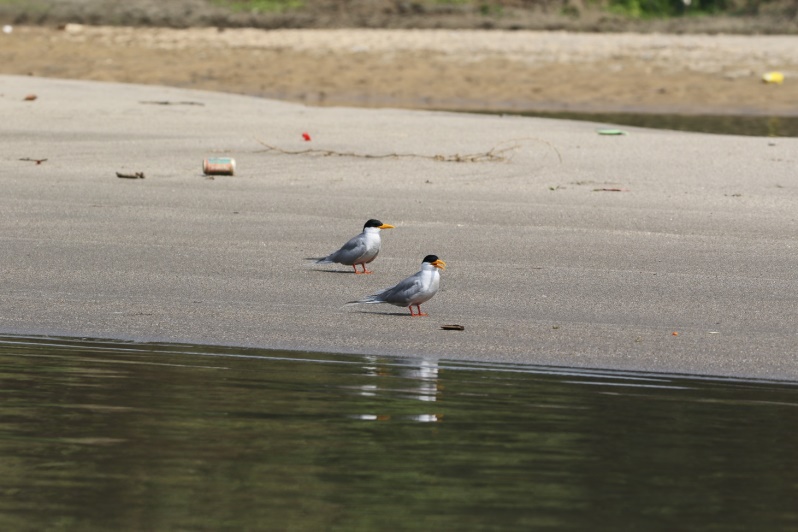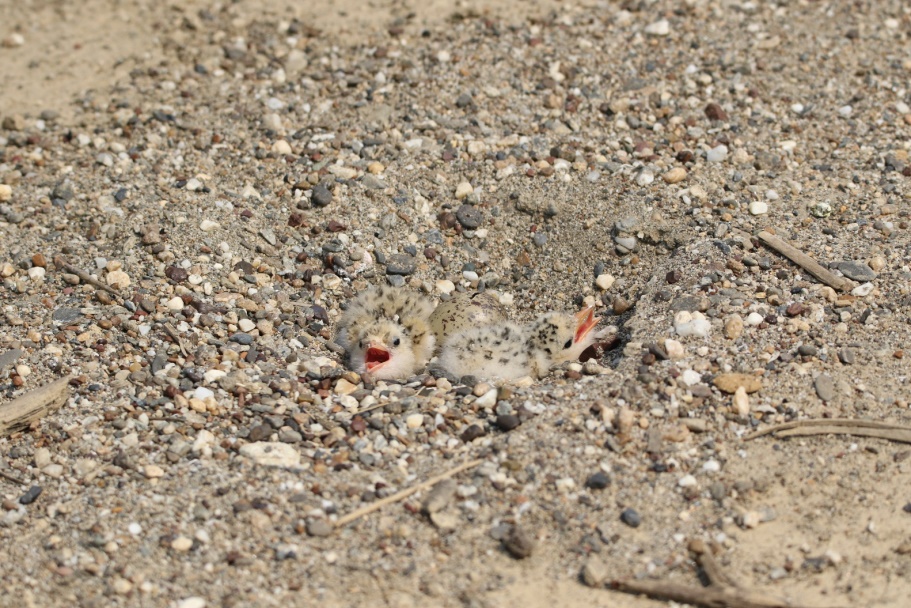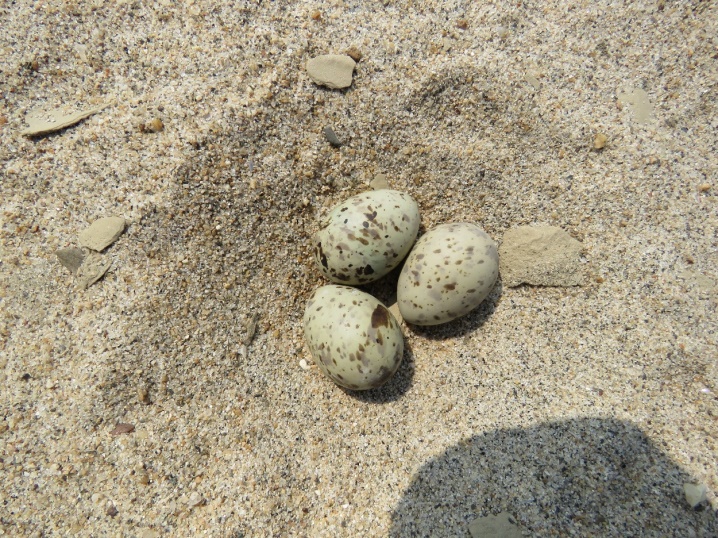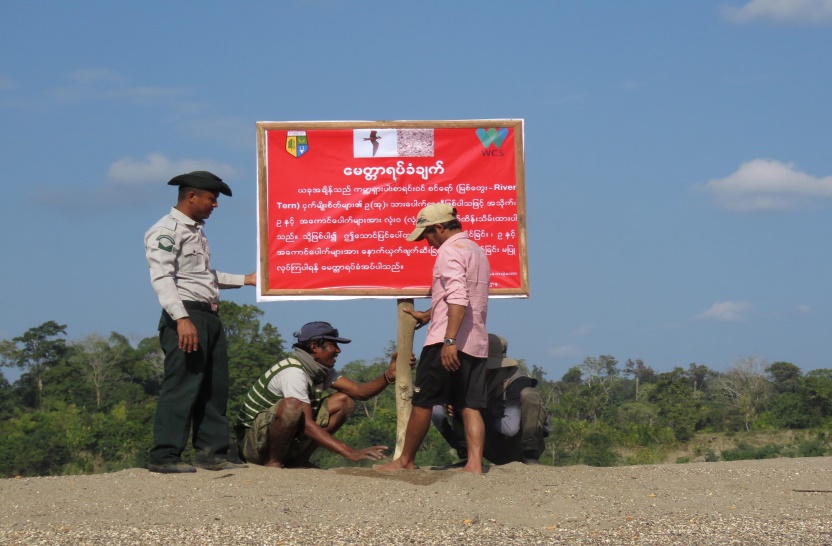
Myanmar is very rich in freshwater biodiversity. The inland water ecosystem of Myanmar is associated with four major rivers, the Ayeyarwady, Chindwin, Thanlwin and Sittaung. Freshwater and wetland biodiversity and ecosystems provide essential ecosystem services to the Myanmar people. Sadly, many freshwater species and habitats are rapidly being degraded and destroyed, due to several threats. Some species face habitat lost and dramatic population declines due to human activities. Conservation is urgently needed to protect freshwater habitats and populations of important threatened species.

The River Tern and Black-bellied Tern are two rare Tern species that occur in Ayeyarwady River and Chindwn Rivers in Myanmar. The Black-bellied Tern is smaller and slimmer than the River Tern, and has a distinctive black underside during the breeding season. The River Tern has been categorized as Near Threatened and Black-billed Tern as Endangered according to the IUCN Red List. Both species are rapidly declining in Myanmar, and the Black Bellied tern is probably Myanmar’s rarest bird. These two species are mainly found in big rivers and adjacent wetland areas. They breed on sandbars in the rivers when the water level is low between February to March. They nest directly on the ground, often in a small scrape on bare sand, and lay two to three greenish-grey eggs, which are blotched and streaked with brown. Our research has found an incubation period of 22 to 28 days and 25 to 30 days between hatching and fledging of the chicks.
The first survey was conducted in 2012 at along the Chindwin River, from Monywa to Khamti. One hundred individual River Terns were recorded. In 2016, with WCS’ new project focusing on freshwater conservation, a survey was completed which covered more than 2000 km along the Ayeyarwady (Bamaw to Pyay) and Chindwin (Badumone to the confluence) Rivers. The survey found a total of 58 River Terns (upper Chindwin River) and six Black-bellied Terns (Ayeyarwady River - near Takaung).

In 2017, the WCS survey team recorded a new sub population of Black-bellied Tern with six individuals near Yaynanchaung, and located 12 individuals and two nests along the Ayeyarwady River. For River Tern, 101 individuals and 29 nests were recorded in both rivers.
During the 2018 survey, the River Tern population seemed to decrease due to intensive human activities on the sand bars: 24 nests were recorded at the Chindwin River. A total of 14 Black-bellied Terns, as well as eight fledging juveniles were recorded at the two breeding grounds in the Ayeyarwady River. All of these nests were protected by local people working with the WCS team.
Threats that these species face include human settlement and migration into their breeding areas, the collection of eggs for food, predation of eggs and chicks by dogs, cats, predators and crows, flooding of nesting sites by unusual weather conditions, habitat conversion to agriculture, sand and gravel dredging and gold mining.

Survey and conservation activities were conducted in collaboration with the Forest Department and local communities. Across the breeding grounds, the team collaborated with local communities to protect nesting beaches from human and animal disturbance, predators and gold mining during the breeding season from February to March. A major conservation success for such a rare freshwater species, in 2017, the team protected nests of 43 River Tern chicks were protected until fledging in seven different areas. For Black-bellied Tern, the team protected two chicks in 2017, and eight in 2018, until confirmed fledging. An Education Program was also conducted in the upper Chindwin near the River Tern’s main distribution and breeding grounds. A total of 2,100 people from 42 villages attended events on River Tern awareness and conservation, resulting in increased collaboration from local communities following the program.
Naing Lin
WCS Myanmar